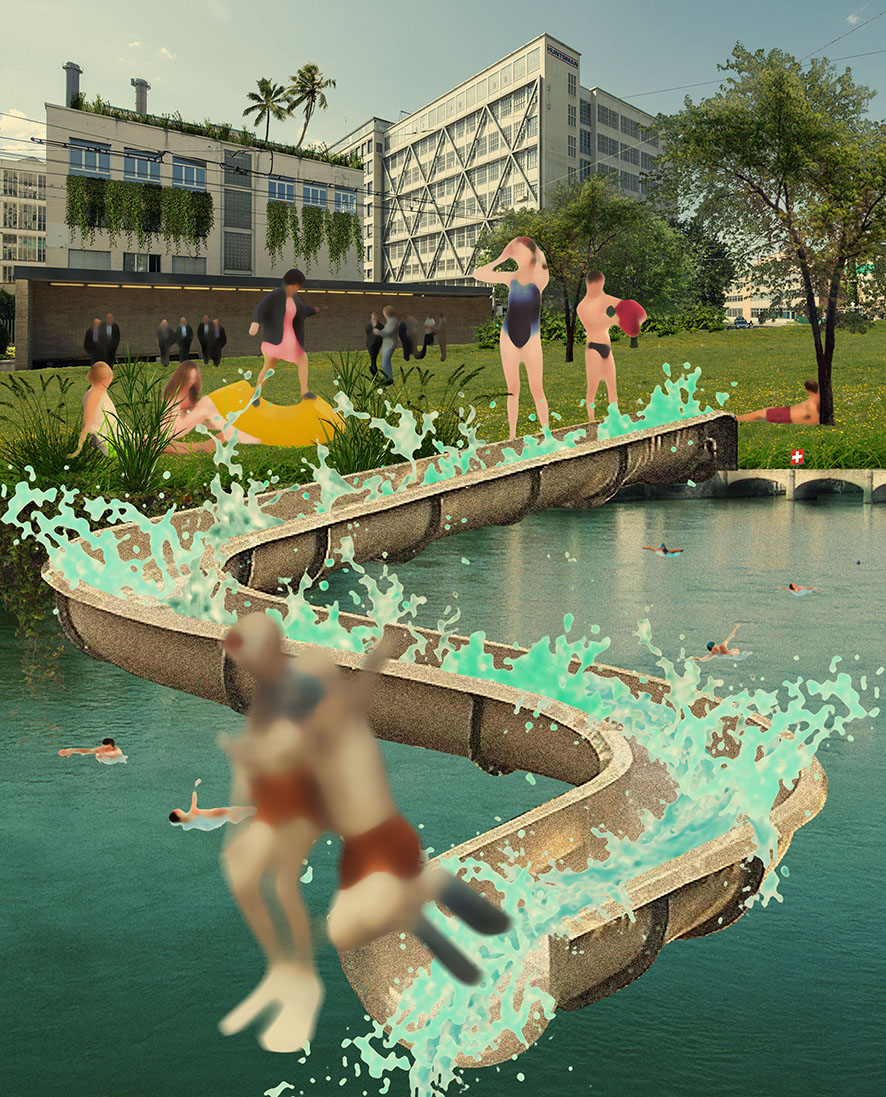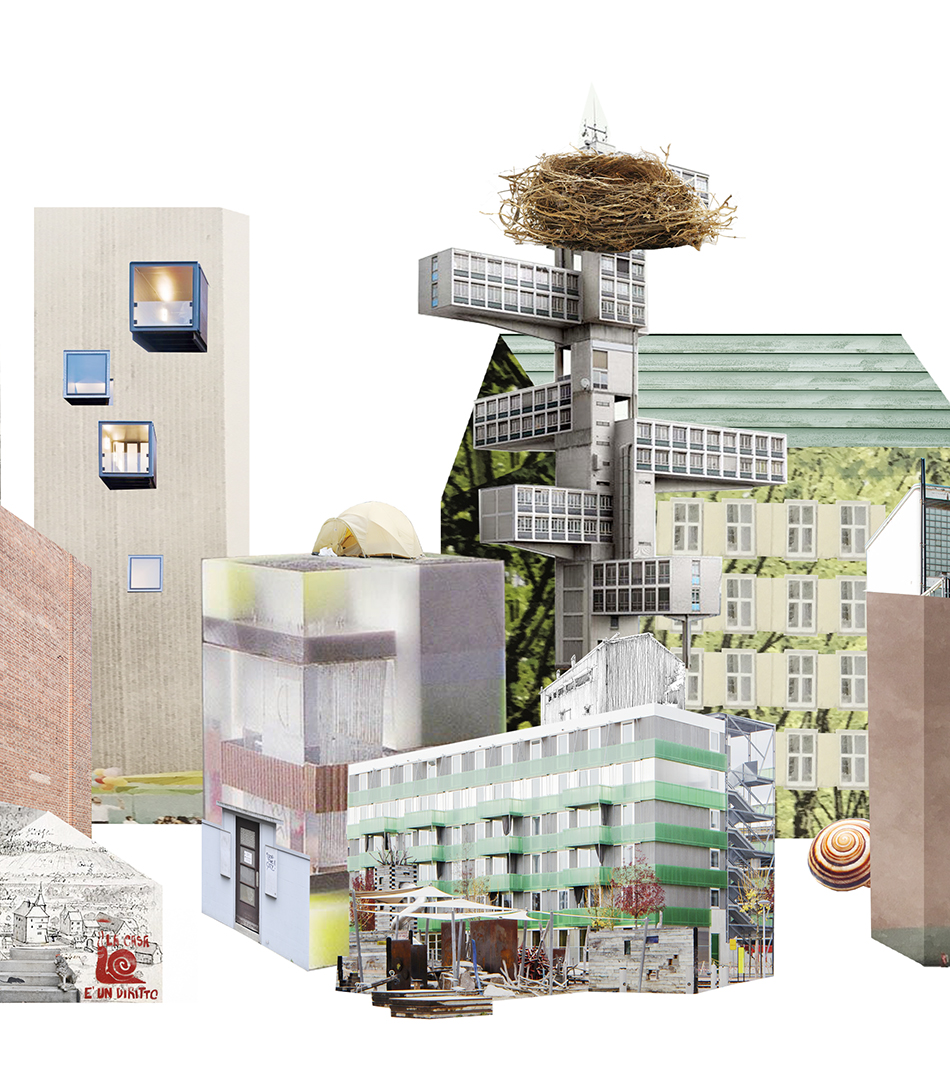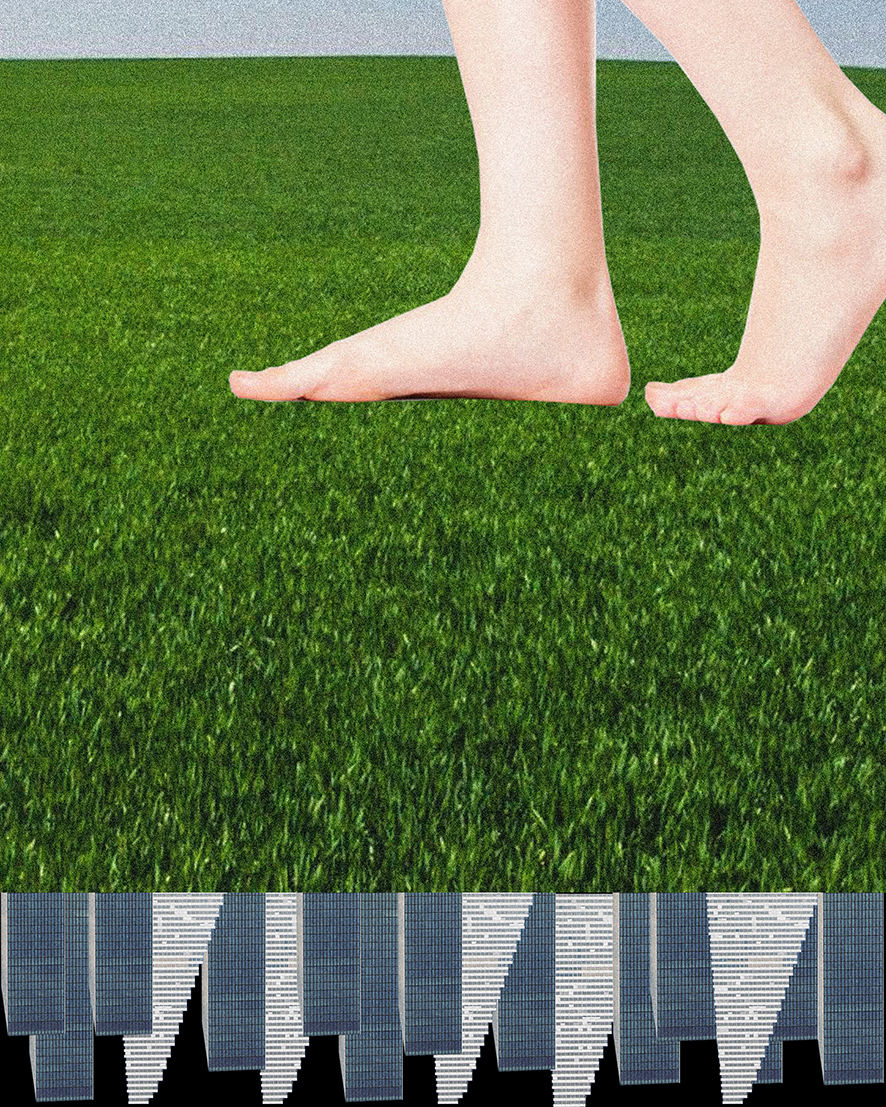Methods
Participatory Imagin(eer)ing I
A multitude of thoughts, wishes or demands for the future of the city are communicated verbally or in writing. In this discourse on urban futures, there is an added value in translating words into images. The latter follow their own logic of generating meaning (Boehm 2007) and can add to a heightened access to information. Along these lines, designers transfer narratives of various actors into images, thereby engaging their experience in the creation ofdifferentiated visual statements. The only specification for the image design is a common format in terms of paper size; this facilitates image comparisons and ensures sufficient space necessary to visualize complex information.Otherwise, a broad spectrum of visualization techniques is used, such as photography, collage, infographics,drawing or a combination of these. During this process, designers visually refer to and engage the image pool from the Klybeck planning process as well as the outcome of a second process (Participatory Imagin(eer)ing II). A diverse visual repertoire emerges that addresses the actors’ key interests in different ways.
The objective of PI I is not to “translate” actors’ statements into precise and definite visions. Instead, the aim is to create images that stimulate imagination and allow for a variety of interpretations and perspectives on relevant topics. Interviews with individuals and small groups are based onthese images in order to identify image qualities that are particularly conducive tostimulatingdiscussion. Participants can react to the material either verbally or embodied, by putting images in relation, combine single elements and draw or write on them. Using insights from these meetings, the research team continues to work on these images, develops and refines them further, and takes them into following meetings.
The objective of PI I is not to “translate” actors’ statements into precise and definite visions. Instead, the aim is to create images that stimulate imagination and allow for a variety of interpretations and perspectives on relevant topics. Interviews with individuals and small groups are based onthese images in order to identify image qualities that are particularly conducive tostimulatingdiscussion. Participants can react to the material either verbally or embodied, by putting images in relation, combine single elements and draw or write on them. Using insights from these meetings, the research team continues to work on these images, develops and refines them further, and takes them into following meetings.











